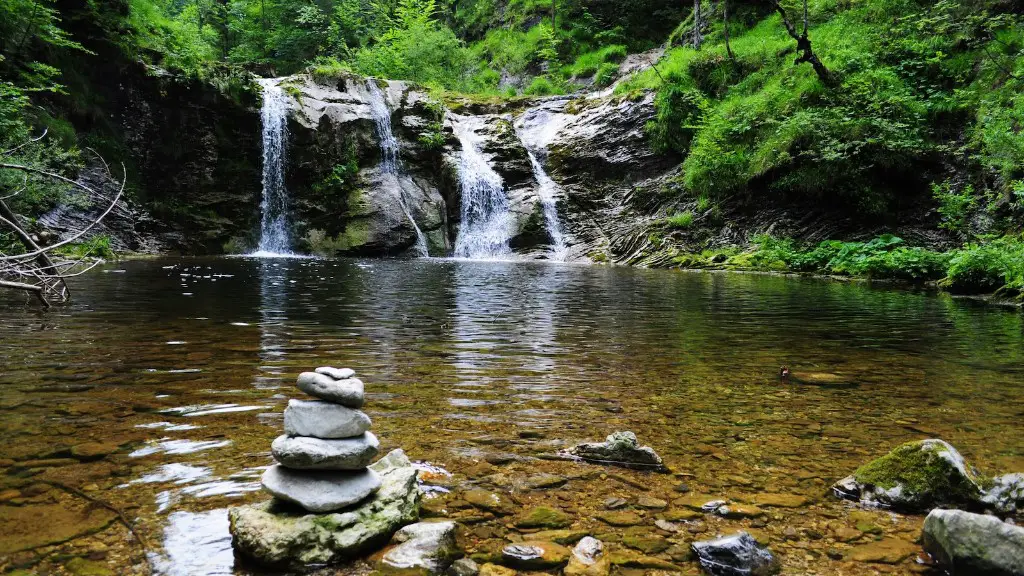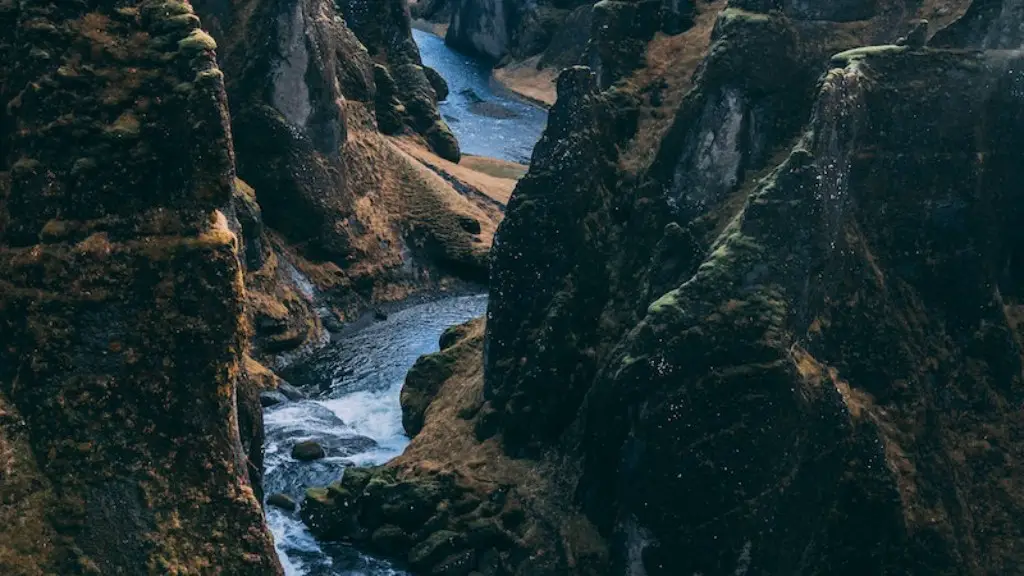The Amazon River basin is home to the largest rainforest in the world. This tropical forest surrounds the river and its tributaries, providing a home to an array of plant and animal species. The Amazon River and rainforest play a vital role in the global climate and are an important part of the Earth’s ecosystem.
The Amazon river ecosystem is home to a huge variety of plant and animal life. The rainforest surrounding the river is one of the most diverse ecosystems on earth. There are thousands of different species of plants and animals that make their home in the rainforest.
What type of ecosystem is the Amazon river?
The Amazon Rainforest is the largest tropical rainforest in the world, spanning across 9 countries – Brazil, Peru, Colombia, Venezuela, Ecuador, Bolivia, Guyana, Suriname and French Guiana. With a total area of 6 million square kilometers, it is also the largest continuous rainforest ecosystem in the world.
The Amazon Rainforest is home to an incredible diversity of plant and animal species, many of which are still unknown to science. It is estimated that there are around 40,000 plant species and 3,000 fish species in the Amazon basin. The rainforest is also home to more than 1,000 bird species, 400 mammal species and 2.5 million insect species.
The Amazon Rainforest plays a vital role in the global climate and is often referred to as the “lungs of the planet”. The rainforest produces 20% of the world’s oxygen and is a major sink for carbon dioxide. It is also an important source of fresh water for the countries it covers.
The Amazon Rainforest is under threat from deforestation, which is causing the loss of vital habitat and the destruction of the forest’s delicate ecosystem. Deforestation is also contributing to climate change and the loss of biodiversity
The Amazon rainforest is the world’s most enormous forest. It surrounds the Amazon River and is home to an incredible variety of plant and animal life. The rainforest is an important source of oxygen and fresh water, and it plays a vital role in the global climate.
What are the 4 ecosystems of the Amazon
The Amazon is a complex and diverse ecosystem that has been shaped by both natural forces and human activity. The variety of ecosystems and vegetation types found in the Amazon reflect the varied environmental conditions found in the region, as well as the past influence of human activity. The rainforests, seasonal forests, deciduous forests, flooded forests, and savannas of the Amazon are all unique and dynamic ecosystems that contribute to the incredible biodiversity of the region.
The Amazon ecosystem of products and services is vast, comprising retail, transportation, B2B distribution, payments, entertainment, cloud computing, and other segments. Amazon has a strong focus on customer satisfaction and providing a good customer experience. Amazon has a wide variety of products and services that cater to different customer needs. Amazon’s transportation and logistics infrastructure is one of the most efficient in the world. Amazon has a strong focus on innovation and is constantly introducing new products and services. Amazon is a powerful force in the global economy and is having a major impact on many industries.
Is the Amazon river a freshwater ecosystem?
The Amazon’s freshwater ecosystems are essential to regulating climate, transporting nutrients, maintaining water quality, supporting biodiversity, and providing food and fiber. These ecosystem services are essential to local, regional and global communities.
The Amazon is one of the most biodiverse places on earth, with over 3 million species living in the rainforest. Over 2,500 tree species help to create and sustain this vibrant ecosystem. The Amazon is a vital part of the earth’s ecosystem and is essential to the health of our planet.
Which biome covers much of the Amazon basin along the Amazon river?
The Amazon biome is the largest of the Earth’s biomes, covering over five million square kilometers. It is home to the Amazon rainforest, which is the world’s largest tropical rainforest. The Amazon biome is characterized by high rainfall, high temperatures, and high humidity. The Amazon rainforest is the most species-rich forest in the world, with over 40,000 plant species, 3,000 fish species, 1,300 bird species, and 400 mammal species.
The Amazon River is one of the longest rivers in the world and originates in Peru. It is approximately 4,000 miles long and flows through nine South American countries. The Amazon River System is the largest river system in the world and supplies 20% of the ocean’s freshwater.
Did you know that a Slovenian athlete once swam almost the entire length of the Amazon River in 66 days? That’s an incredible feat!
Here are 15 facts about the Amazon River that will blow your mind:
1. The Amazon River originates in Peru.
2. The Amazon River is approximately 4,000 miles long.
3. The Amazon River flows through nine South American countries.
4. The Amazon River System is the largest river system in the world.
5. The Amazon River provides 20% of the ocean’s fresh-water supply.
6. The Amazon River is home to the world’s largest rainforest.
7. The Amazon River is home to more than 3,000 species of fish.
8. The Amazon River is home to more than 1,000 species of birds.
9. The Amazon River is home to more than 2.5 million insects.
Does the Amazon rainforest surround the Amazon river
The Amazon rainforest is the largest tropical rainforest in the world, occupying the drainage basin of the Amazon River and its tributaries in northern South America. Covering an area of 2,300,000 square miles (6,000,000 square km), it is home to an incredible diversity of plant and animal life.
A forest Ecosystem is a community of organisms that interact with one another and their physical environment. A forest typically has a closed canopy of trees that shades the underlying ground.
A Grassland Ecosystem is an area of land that is mostly dominated by grasses and other herbaceous plants. Grasslands are found on every continent except Antarctica.
A Tundra Ecosystem is a cold, treeless region found in the Arctic and on high mountains. Tundras are characterized by permafrost, or permanently frozen ground.
A Desert Ecosystem is a hot, dry environment that receives very little rainfall. Deserts are found on every continent except Europe.
What is the ecosystem of a rainforest?
The tropical rainforest biome typically has very high annual rainfall levels. This is caused by the combination of warm temperatures and high humidity levels. These conditions cause the evaporation of water from the soil and vegetation to be high, which in turn increases the amount of rainfall.
Average temperatures in the tropical rainforest are also relatively high. This is due to the proximity of the rainforest to the equator, where the sun’s rays are the most direct. The combination of high rainfall and temperatures creates an environment that is ideal for the growth of many different plant and animal species.
Soil conditions in the tropical rainforest are typically quite poor. This is due to the high amount of rainfall, which leaches nutrients out of the soil. The high temperatures and humidity levels also lead to the breakdown of organic matter in the soil.
Despite the relatively poor soil conditions, the tropical rainforest is home to a huge diversity of plant and animal species. This is due to the favourable climate conditions and the fact that the rainforest has been around for a very long time, allowing for evolution to occur.
The Amazon rainforest is one of the most important ecosystems on the planet. Not only does it provide a home for an incredible diversity of plant and animal life, but it also plays a vital role in regulating the global climate.
The trees of the Amazon rainforest store huge amounts of carbon, which helps to stabilize the climate. They also release large quantities of water into the atmosphere each day, which helps to regulate the global water cycle.
The Amazon rainforest is therefore a vital part of the Earth’s ecosystem, and it is important that we work to protect it.
What are 3 ecosystems
Ecosystems are complex systems of interacting organisms and their physical environment. There are three broad categories of ecosystems based on their general environment: freshwater, marine, and terrestrial. Within these three categories are individual ecosystem types based on the environmental habitat and organisms present.
Freshwater ecosystems include ponds, lakes, streams, and rivers. These ecosystems are typically dominated by aquatic plants and animals, although there is some variation depending on the specific habitat.
Marine ecosystems include oceans, coral reefs, and estuaries. These ecosystems are dominated by saltwater plants and animals, although there is some variation depending on the specific habitat.
Terrestrial ecosystems include forests, grasslands, and deserts. These ecosystems are typically dominated by land plants and animals, although there is some variation depending on the specific habitat.
Each of these ecosystem types has unique characteristics and supporting organisms. The specific combination of environmental conditions and organisms present determines the function and productivity of an ecosystem.
The Amazon rainforest ecosystem is one of the most important ecosystems in the world. It plays a vital role in regulating climate and providing vital ecosystem services. In this role, it produces significant amounts of oxygen, acts as a carbon sink to remove carbon dioxide from the air and stores it in the soil, and cleans huge volumes of water.
The Amazon rainforest is a critical part of the global climate and its health is essential to the health of the planet.
What is meant by ecosystem ‘?
An ecosystem is a geographic area where plants, animals, and other organisms, as well as weather and landscape, work together to form a bubble of life. Ecosystems contain biotic or living, parts, as well as abiotic factors, or nonliving parts. Biotic factors include plants, animals, and other organisms.Abiotic factors include water, air, sunlight, and soil.
The Amazon Basin has the most extensive and diverse freshwater wetlands in the world. In large part, the high wetland biodiversity is linked to the extensive flooded forests where aquatic and arboreal life comes together during the long annual floods. The Amazonian Flooded Forest is one of the most biodiverse ecosystems on Earth, with an extraordinary array of plant and animal species.
Warp Up
A rainforest ecosystem surrounds the Amazon River.
The Amazon River ecosystem is one of the most diverse and unique ecosystems in the world. It is home to many different species of animals and plants, as well as many different types of habitats. The Amazon River is a vital part of the ecosystem and is critical to the survival of many species.





